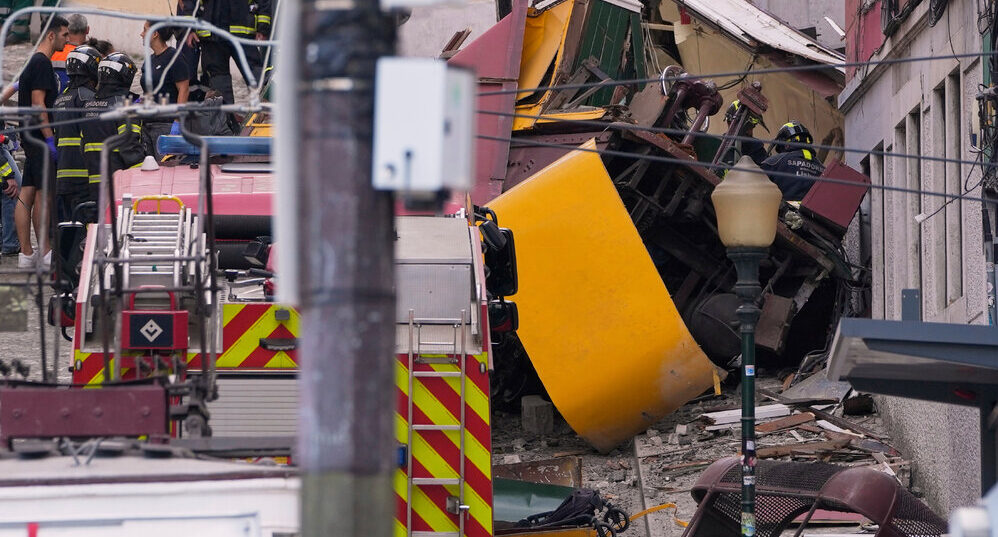Portuguese authorities are investigating what caused a historic Lisbon funicular to hurtle out of control and crash into a building, killing at least 16 people and injuring 22 more.
The accident happened Wednesday on the As censor da Gloria, a century-old yellow tram that carries passengers up and down one of the city’s steepest hills. The carriage came off the track near the bottom of the 265-meter slope after its cable snapped, officials said.
The wreckage lay just meters from the funicular’s twin car, which had narrowly avoided a head-on collision.
Abel Esteves, 75, was riding in the lower car with his wife and grandson when the other carriage broke free.
“I told my wife, ‘We’re all going to die here,’” he recalled. “It picked up a brutal speed, took a turn, and slammed into the building with a loud bang.”
Mourning and investigation
Portugal declared a day of mourning Thursday, with flags at half-mast and the city’s two other funiculars shut for inspections. Pope Francis sent condolences, and Prime Minister Luis Montenegro called it “one of the greatest human tragedies in our recent history.”
Montenegro said the investigation would move quickly and confirmed that TAP, Portugal’s state airline, had offered to fly in families of the victims and help repatriate the injured and the dead.
Emergency officials initially reported 17 deaths but later revised the toll to 16, including one victim who died overnight in hospital. Thirty-eight people were hurt in total.
Foreign nationals were among the injured, including citizens of Germany, Spain, South Korea, Cape Verde, Canada, Italy, France, Switzerland, and Morocco. Authorities have not released names of the dead, but local media reported that a German father was killed while his wife was seriously injured. Their 3-year-old child survived with minor injuries.
A symbol of Lisbon
The Ascensor da Glória, which opened in 1885, connects Lisbon’s bustling Restauradores Square with the nightlife district of Bairro Alto. It carries around 3 million passengers a year and is a well-known city landmark.
Some residents defended its safety record.
“People say it was negligence, but it wasn’t,” said Eliane Chaves, a Brazilian living in Lisbon for 20 years. “They supervise it thoroughly. It was an accident, just like a plane or car accident.”
But union leader Manuel Leal told local TV that workers had previously complained about cable tension making braking difficult. He cautioned it was too soon to link those problems to Wednesday’s crash.
The operator, Carris, insisted that all maintenance checks had been carried out, including daily inspections. Police have since examined the braking system on the undamaged car.
How it happened
The funicular’s two cars are connected by a cable, which allows one to climb while the other descends. According to fire officials, the cable appeared to have snapped, leaving the runaway carriage unable to slow down.
It sped into a curve too fast, derailed, and smashed into a building. The lower car was jolted back but seemed largely undamaged. Videos posted online showed terrified passengers climbing out of its windows.
The crash comes at a time when Lisbon has seen a surge in tourism, with millions of visitors packing the narrow streets of its historic center each year.






